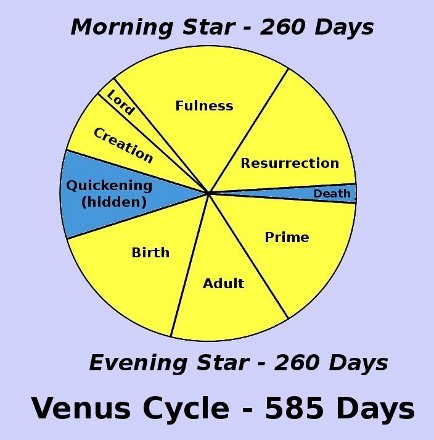
by John P. Pratt
9 May 2013, 1 Flower (Sacred Round)
©2013 by John P. Pratt. All rights Reserved.
| 1. Uniform Calendars |
| 1.1 Uniform Venus Calendar |
| 1.2 Begin at Fall of Adam |
| 2. Seven Angels |
| 2.1 Peter |
| 2.2 Moses |
| 2.2.1 Levi |
| 2.2.2 Is Abraham Raguel? |
| 2.3 Abel |
| 2.4 Enoch |
| 2.5 Joseph Smith |
| 2.6 Noah |
| 2.7 Adam |
| 3. Jesus Christ |
| 4. Noble Women |
| 4.1 Noah's wife: Naamah |
| 4.2 Moses' mother: Jochebed |
| 5. Hanukkah: Festival of Lights |
| 6. Latter-days |
| 6.1 Book of Mormon |
| 6.2 Restoration of Church |
| 7. Conclusion |
| Notes |
Note: The correlation of this proposed Uniform Venus Calendar has later been improved. See "Stronger Uniform Venus Calendar Witness" for details. The new results are incorporated in the Religious Chronology.
This article introduces a newly discovered sacred calendar, being the tenth in the series having been discussed by this author. It adds another series of confirming witnesses to the voice of all the others, namely that there is a God who created the heavens and the earth, and who has a detailed foreknowledge of how future events will unfold. His degree of organization is beyond anything man can begin to comprehend. The calendar discussed herein is of the type to be called "uniform calendars" which offer some of the strongest witnesses because of their simplicity, power, and accuracy.
 |
The second type of calendar is a simple day count, usually done according to some kind of pattern. Until now these have been referred to as "Fixed" calendars in my work. The name "Fixed" was intended to convey the idea that they were constant and unchanging. That is, it meant they were never intercalated. They were simply a way of counting days. No extra days were ever inserted or skipped. An example of this type of calendar is our 7-day week. It just keeps counting days by sevens, without regard to new moons, or any other celestial event. Examples of this type of calendar discussed in my articles are the Julian Day Count (a continuous count of days starting in 4713 BC), the Sacred Round (260 days), the Enoch Fixed Calendar (364 days), the Jubilee Fixed Calendar (also 364 days) and the Priest Calendar (160 days).
As this article was being written it became clear that the name "Fixed" has several drawbacks. The last article was an update announcing that some errors in my model of the Venus calendar had been "fixed". In a sense it was a "fixed" calendar, meaning "no longer broken". It is impossible for me to now name a new different calendar the "Venus Fixed Calendar".
Therefore, the new term "uniform" is hereby introduced to bring the idea of "one form", and also of "constant" and "unchanging". That name will henceforth also be retrofitted to replace "Fixed" in all the former "Fixed" calendars. My Calendar Spreadsheet now lists the choices as "Uniform Enoch Calendar" and "Uniform Jubilee Calendar" rather than the former names listed above (already forgotten!).
As you read this article, please keep one thing in mind about all uniform calendars. Many dates will be listed for birth or death or event dates which are on holy days on the Uniform Venus Calendar. Keep in mind that for any uniform calendar, there is only one day which can be chosen to line up with a known event. On the Sacred Round, the one date chosen by this author was the birth of Christ. After than all other dates are determined. There are no other variables to adjust, or special intercalations to choose to make things come out the way the author wishes. Remember this especially with the Sacred Round, which is the backbone of so many calendars. Each day just falls where it does according to a uniform pattern and is never adjusted in any way. Thus, the alignments on so many key dates make a truly compelling witness for God. With all that in mind, let us now turn to the new Uniform Venus Calendar.
|
The pattern is never adjusted to actually track the planet Venus, which has cycles of 583.92 days in length. Accordingly, it is a rare decade when the Uniform Venus Calendar date describes the actual planet Venus phase in the sky. The interval between its alignments with the Venus Calendar is about 868 years (two alignments every 633,555 days), at which time they align perfectly for about 20 years. However, because the Venus Cycle has Evening Star and Morning Star phases which divide the cycle approximately in half, "opposite-alignments" can also occur in half that period with, for example, the phase "Birth" in the evening corresponding to "Resurrection" in the morning (See Figure 1). That can be thought of as similar to our 24-hour day having two "6 o'clock" positions, one beginning the morning and one the evening. The clock strikes 6 o'clock every 12 hours rather than every 24. Allowing both "alignments" and "opposite-alignments" means the two calendars align about every 434 years.
So of what use is a calendar which almost never lines up with its namesake? That is an excellent question. It is that kind of question (with an implied negative answer) which prevented me from even investigating whether or not God might be using such a calendar. But the evidence that He does use uniform calendars is so strong in the case of the Uniform Enoch and Uniform Jubilee Calendars, that it was worth researching. The result is that there is sufficient evidence from multiple testimonies to indicate that many more important sacred events do occur on a Uniform Venus Calendar than would be expected from random chance.
When is the correct time to start a proposed Uniform Venus Calendar? After researching many possible starting points, one choice stood out as superior for the reasons described throughout this article. Any starting point would result in a few random alignments, according to the laws of chance. The correct choice is indicated by multiple witnesses that form patterns far beyond what is plausible to result from chance.
The pattern which stood out is that by choosing the first day of the first cycle to be at the Fall of Adam then the lives of all seven chief angels of the Lord begin or end on the Uniform Venus Calendar (UV) during the short periods when it aligns (or opposite-aligns) with the usual Venus Calendar. Thus the starting point was chosen to be Sat 26 Jul 4004 BC, 1 Storm on the Sacred Round (SR) and 1 Adult on the Venus Calendar (V). By that choice, that day also becomes 1 Creation on the Uniform Venus Calendar (UV). The reasons for having chosen that day for the Fall of Adam, as well as reasons for all other published dates, can be found on my Religious Chronology Summary by following the reference links provided.
Choosing that date as the starting point immediately results in one excellent first new holy day. It is the Fall of Eve. Years ago that was published as two weeks before the Fall of Adam. That puts the day on 0 Lord (UV) as well as 13 Serpent (SR), Decision Day (PHC, E), Tabernacles (UE), 1 Delaiah (P), and 0 Prime (M). So Adam and Eve are equally yoked and equally represented on this new calendar also.
Note that the Venus and Uniform Venus Calendars do not align at their starting points. That is, 1 Creation (UV) is not 1 Creation (V), but rather 1 Adult (V). As we will now see, many of the alignment places occur at the birth or death of those seven men who have been proposed by this author to be the seven chief angels of the Lord.
|
Until now, there has been no obvious way to verify that those proposed identifications were correct. Now a new pattern emerges. If all seven of those men had birth or death dates during the brief spans when the Venus and Uniform Venus Calendars align, it would be beyond chance and hence set a requirement for any proposed candidate to be a chief angel. The chance of any one already proposed or known date occurring in one of the 20-year alignment intervals every 434 years is only 20/434 or 1 in 22. To have either the birth or death date of all seven occur in those intervals from chance would be (2/22)7 which is 1 in 19,000,000. In other words, it would be totally beyond chance (unless one believes chance created the universe, in which case anything is considered possible). With that in mind, let us look at suggested vital dates of each of the seven proposed chief angels.
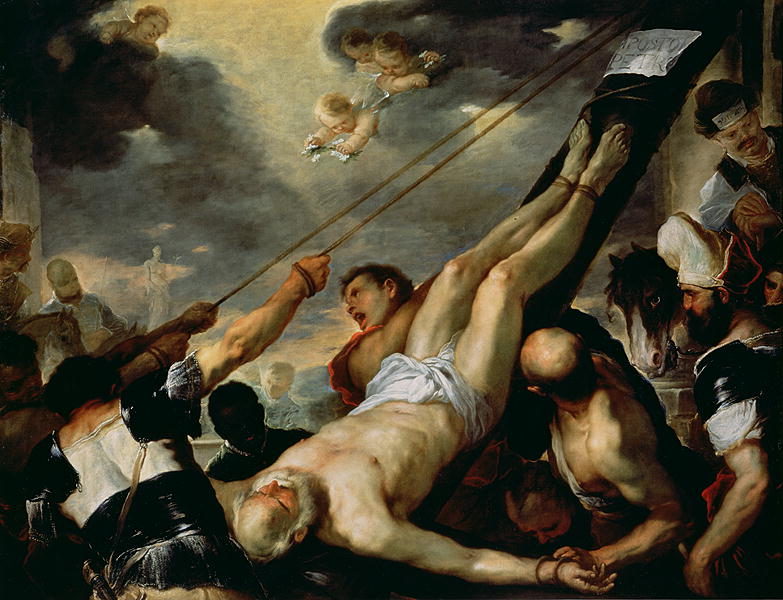 |
"Maliciously condemned, Peter was cast into the horrible, fetid prison of the Mamertine. There, for nine months, in absolute darkness, he endured monstrous torture manacled to a post. Never before or since has there been a dungeon of equal horror. . . . The Mamertine is described as a deep cell cut out of solid rock at the foot of the capitol, consisting of two chambers, one above the other. The only entrance is through an aperture in the ceiling. The lower chamber was the death cell. Light never entered it and it was never cleaned. The awful stench and filth generated a poison fatal to the inmates of the dungeon, the most awful ever known. . . . How Peter managed to survive those nine long dreadful months is beyond human imagination. During his entire incarceration he was manacled in an upright position, chained to the column, unable to lay down to rest. . . .
"Peter, the Rock, as he predicted, met his death at Rome by the hands of the murderous Romans, who crucified him, according to their fiendish manner. He refused to die in the same position as our Lord, declaring he was unworthy. Peter demanded to be crucified in the reverse position, with his head hanging downward. Ironically enough, this wish was gratified by the taunting Romans in Nero's circus A.D. 67"[4]
 |
But the point for this article to notice that the date is the same on both the Venus and the Uniform Venus calendars. It was this discovery that led me to investigate all of the other angels. The once-in-868-year alignment of the two calendars was not during the life of the Savior, but at the crucifixion of Peter. The idea arose that they might align for other angels as well.
As stated above, the alignment of the calendars lasts for about twenty years. In last month's article on Venus, it was noted that the date of the burning of the temple in AD 70 fell on the day 0 Lord (V). Here it can be added that it was also on 0 Lord (UV), as the calendars were still aligned.
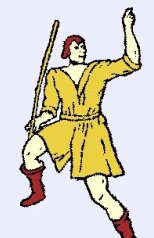 |
Moses was the great prophet representing the tribe of Levi. Levi's death occurred during the time of the alignment of the Venus and Uniform Venus calendars. Perhaps his death date counts as the tie of Moses to the UV Calendar.
Levi's proposed birth date was published a few years ago along with dates for all twelve of Jacob's sons.[5] Of all those twelve dates, only Levi's now appears to have been incorrect. At that time there were two competing choices, but one of them was disallowed because it appeared that it could not have fallen into the zodiac constellation of the Fishes (Pisces), which is Levi's. Subsequent research has shown that the rejected date actually falls exactly on the first evening of 1 Fishes on the yet-to-be-published Zodiac Calendar.
Thus, the proposed date of Levi's birth is now changed to be Sat 16 Jan 1805 BC pm*, being 14 Shebat (PHC), the same day as Moses' birthday. It was also 7 Condor (SR), meaning his circumcision was on 1 Temple, which fits because the Levites were temple workers. And it was on the holy day 1 Immer on the Priest Calendar. All of those alignments are perfect fits for the priestly representative of the twelve sons.
The Bible gives the death year of Levi, the only one of Jacob's twelve sons besides Joseph so honored. He lived 137 years (Ex. 6:16), but the precise indicated death date has not yet been published. His death date proposed here is Sat 21 Jan 1668 BC, being 13 Storm (SR), 1 Shebat (PHC), 0 Birth (V, UV), 0 Lord (M), Passover (UE, UJ), 1 Huppah (P), and again on 1 Fishes on the Zodiac Calendar.
The point of including Levi's death date here is that it indeed fits into one of the few periods when the Venus and Uniform Venus calendar agree: it was 0 Birth on both calendars. So the possibility exists that Levi's death date somehow "stands in" for his more illustrious great-grandson Moses.
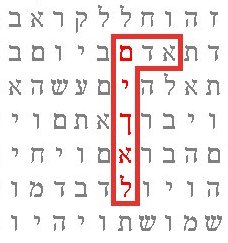 |
James notes that Abraham was called the "Friend of God" (James 2:23 and 2 Chron. 20:7, both quoting Isa. 41:8) similar to Moses (Ex. 33:11). He was a strong consideration when my choices were being made,[7] but his role does not seem to fit the pattern. But it is always good to check for mistakes.
Another important witness may come from Bible codes.[8] They are where hidden words are coded into the Book of Genesis formed by counting some fixed number of letters to find the next one in a word. One pattern that shows when they are meaningful is when they exactly span across a scripture on that very subject. For example, the seventh angel Michael is Adam. It does not say that explicitly in the Bible, but it is hidden in a Bible code. In Gen 5:1-3 where it talks about Adam being created "in the likeness of God", if one starts on the Hebrew "m" in Adam and counts every 24th letter, it spells out "Michael" in Hebrew. Michael means "Like unto God." The chance of a five-letter word being exactly formed across only three verses about that subject, and even starting on the subject word, is so slim as to be compelling evidence that it did not happen by chance. Thus, the code either identifies Adam as Michael, or at least is a second witness that he was created in the likeness of God. Figure 2 shows the Hebrew letters which spell "Adam" horizontally, and "Michael" vertically. The full figure is 24 letters wide because the code is every 24th letter. That makes the hidden word appear vertically like magic!
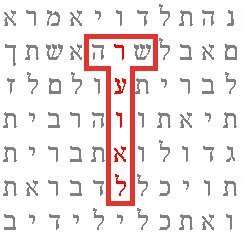 |
In contrast, an exhaustive search all through the books of Exodus, Leviticus, Numbers, and Deuteronomy, which are all about Moses and much longer than the few chapters in Genesis about Abraham, yielded not even one Bible code of "Raguel" comparable to any of the three found for Abraham. That shows how rare such spanning codes are, and is a strong vote for Abraham to be the angel Raguel.
 |
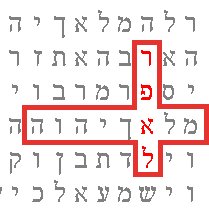 |
Before rejecting Moses as Raguel there is a very important argument not to be ignored. In my article about how each of the seven angels of the Lord has seven constellations, the seven for Raguel seem to match Moses perfectly. They are 1) the Crown (Jasher says Moses was king of Ethiopia), 2) the Herdsman (Moses in Midian), 3) the Infant Prince (Moses was raised by a queen), 4) the Maiden (Moses was mother hen to Israel), 5) the Balance (Moses atoned for their sins), 6) the Altar (Moses set up the tabernacle altar for sacrifices), and 7) the Cross (brazen serpent on the staff).[3] They are illustrated in Figure 5. Those really do fit Moses. Who else was raised as an infant by a queen, became both a shepherd and a king, prayed to atone for the sins of the people he was nurturing, and had any kind of experience with a cross? Abraham had an experience with sacrificing his son on an altar but that's only one correspondence of seven. There is too much supporting evidence for Moses to reject it all because of disagreement with one hypothesis. But it is always good to check for mistakes, which could be in the hypothesis as well as the choice for Raguel.
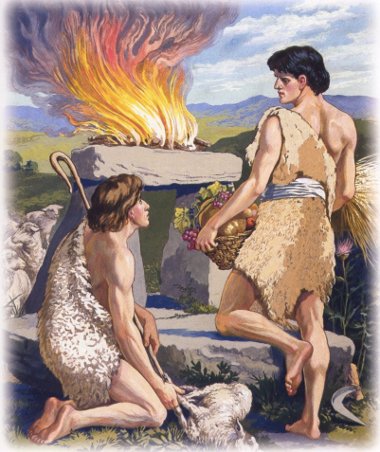 |
Moreover, the day was also 1 Eagle on the Sacred Round, the same as the day when his father Adam first breathed the breath of life ("born", if you a "birther"). Thus, there is the father-son link discussed in detail in the last article. In fact, in that article it was noted that there appeared to be no such link to Seth (but only Atonement on two different calendars). The pattern is that there is a father-son link to one of the sons, and this time it appears to be to Abel.
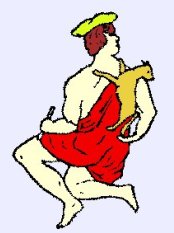 |
The date proposed for Seth's birth in the last article also occurs while the two calendars are in this opposite-alignment period. Moreover, his proposed date is exactly the mirror image. It occurs when the calendars are both emerging from darkness into the light: 1 Resurrection (V) and 1 Birth (UV). Again, see Figure 1.
This symmetry and symbolism is so powerful and compelling as to make Abel's death date virtually certain even though the year is not even given in the Bible. Note also that on the Uniform Venus Calendar, the events are on the appropriate date: Abel dies on 1 Death and Seth is born on 1 Birth.
So both Abel's death date and Seth's birth date occur in the short period when the Venus and Uniform Venus Calendars are opposite-aligned, casting a confirming vote for Abel to be one of the Seven Angels and/or for the hypothesis that they should be tied to the alignment periods of the V and UV Calendars.
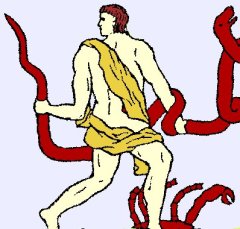 |
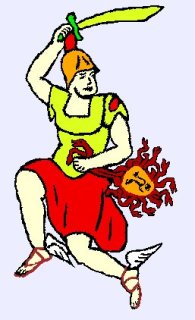 |
Now for the first time something really unusual shows up about his birth date of Mon 23 Dec 1805. It was 9 Quake (SR), 9 Prime (V), 9 Prime (M), and 9 Prime (UV). The importance of 9 is just being discovered in my work, such as the 9 holy points of the Venus Calendars. For the purposes of this research, that is the same day on both the Venus and the Uniform Venus Calendars, so that meets the criterion being investigated for the chief angels. Adding 2 cycles of 868 years to AD 67 brings one to AD 1803. So with full alignments every 868 years, the birth date of Joseph Smith falls two alignment intervals after Peter's death.
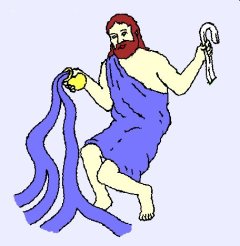 |
So far we have all 6 of the proposed chief angels' birth or death dates occur in either an alignment or opposite-alignment interval, provided that Abraham is swapped in for Moses. What about Adam? He is the archangel, the one of the seven who is known by revelation to be Michael and also the seventh, who presides over the other six (D&C 88:112, 107:54, 107:94).
At first blush, it does not appear that Adam's vital dates fit the pattern. He even has two "birth" dates: the one on which he first breathed the breath of life (1 Birth), and when his mortality began after the Fall (1 Creation). Neither of his birth dates fit into the alignment intervals. Remember, it is the dates of his sons Abel and Seth which fit.
Adam's death date is 0 Creation (V) and 0 Resurrection (UV). Those are wonderful dates, but they both occur on the Morning Star side of the Venus Cycle and do not appear to fit the pattern of being either identical or opposite each other.
Consider the following. There are nine holy orbital points in the Venus Cycle. We have just see eight of them pair off as opposite corresponding points between Evening and Morning Star. That is, Birth corresponds to Resurrection where the planet emerges into the light. Then Adult and Fulness are next, followed by Prime and Lord. The last points Death and Quicken correspond where Venus plunges into darkness.
That leaves the point Creation without a partner! And the cycle begins at Creation. Is it just out of luck, or is there a partner indicated for it also?
Looking at the meaning of the names of the points there is indeed an indicated partner. The point Creation is really the beginning point of the Evening Star cycle, even though it is on the Morning Star side. It is where Venus is created before it goes into the womb at its quickening. In other words, life really begins before birth, but in another sense it does begin at birth.
 |
Thus, in a very real sense, even symbolized by Adam's own life, both the days 1 Birth and 1 Creation correspond to 1 Resurrection, which is the only starting point of the Morning Star cycle.
Having made that breakthrough, now Adam does indeed fit the symbolism perfectly. His death date on 0 Creation (V) is "opposite" 0 Resurrection (UV). That means that if Abraham is Raguel, then either the birth or death date of all seven proposed angels fall on identical or opposite days on the Venus and Uniform Venus Calendars. As stated at the beginning, the odds against that happening by chance are phenomenal. To me that is a strong argument that the birth or death date of all the seven angels will fit this pattern.
If so, then Moses would be eliminated from consideration for being one of the seven chief angels. The other proposed idea of Levi "standing in" for him does not seem convincing because it appears to be an unwarranted exception and greatly weakens the strength of the pattern. But it could still be true. Abraham may indeed be Raguel, or it could also be someone else not yet considered. This is an ongoing research project, and all of these identifications must be regarded as tentative, except for Michael being Adam which has been revealed. Another point to remember is that in my article about the seven constellations which represent each angel, the seven for Raguel really seem to fit Moses perfectly. So for now the jury is out, but it certainly is a very interesting ongoing research project.
.jpg) |
In the case of the Savior, it turns out that it is the birth date that is a holy day: Wed 5 Apr 1 BC pm* was the day 1 Quickening (UV).
Two other dates in the Savior's life that fell on holy days on the Uniform Venus Calendar were: the magi coming on 1 Birth (UV) and becoming accountable on his eighth birthday on 1 Quicken (UV). Other than that, this calendar does not seem to play much of a role in the Savior's life, as did the Venus Calendar on which most of His big events fell on holy days.
On the other hand, both the proposed birth and death dates of John the Baptist fell on holy days on the Uniform Venus Calendar, being 1 Fulness and 0 Fulness respectively. That means his 32-year (11,700 day) lifespan completes an exact number of cycles on at least six sacred calendars: 45 Sacred Rounds, 15 Mars cycles, 15 Uniform Mars cycles, 20 Uniform Venus cycles, 101 Mercury Cycles, and 100 Uniform Mercury cycles. (The Uniform Mercury and two Mars calendars have not been published yet, but the lengths of their cycles are known.) That has got to be the world record, even for the patriarchs who lived nearly a thousand years!
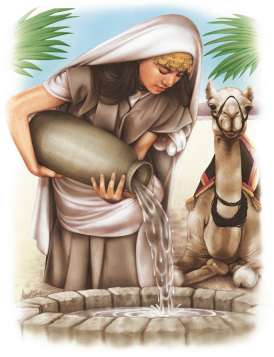 |
For example, neither Isaac nor Jacob have proposed birth or death dates that are holy on the UV Calendar, but their wives Rebekah, Leah and Rachel all do. Again, it is when there are three witnesses that one should take notice. Rebekah is born on 1 Prime (UV), as well as 1 Birth (V). Rachel died on 1 Prime (UV) and 1 Adult (V) and her twin sister Leah died two years later on 1 Fulness (UV) and 1 Resurrection (V). Those are three separate dates for three closely related women and yet their husbands are not involved in this symbolism. So it is noted here in passing in case a pattern becomes clear in the future.
Now let us turn to two more noble women to propose birth or death dates that are also holy days on the Uniform Venus Calendar. And they both were older even than Sarah when they gave birth to their children!
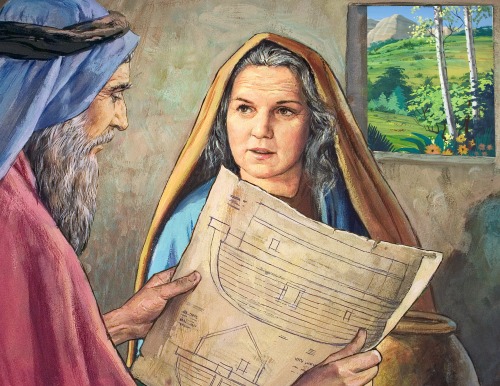 |
The Book of Jasher explains that Noah was loath to marry because he knew the world would soon be destroyed, so there was apparently no point in bringing more children into it. But the Lord told him to marry anyway. (Didn't Bill Cosby add, "Maybe you'll be lucky!"?) It states that at age 498 he married Naamah, the daughter of his great-grandfather Enoch. She was then 580 years old (Jasher 5:12, 14-16). Apparently he preferred a fully mature, older woman. Eighty-two years older to be exact! Yep, never too late to start a family!
Consider Noah's choice. He was going to pick a wife to be the mother of all living after the Deluge. One would suppose he chose carefully. He picked the daughter of Enoch! What a marvelous choice. Long before Abraham he was apparently convinced of the importance of marrying into a choice genetic line. As his descendants, we can be grateful that he selected such a wonderful mother for us all.
There is only one date that emerges from the search for Naamah's birth date. The date was chosen before anything was known about the Uniform Venus Calendar. Her proposed birth date is Sun 9 Jun 3025 BC am, which was 1 Serpent (SR), 1 Tammuz (PHC), 1 Death (V), 1 Lord (M), and Firstfruits (P). That was plenty good to publish before.
But now it turns out that it was also 1 Birth (UV). So it was not only a holy day on the UV calendar, but the very holy day representing birth. That counts double and required me to publish her birth date. She has been a forgotten woman, but deserves great honor to be the mother of all living. That honor is shown in her amazing birth date.
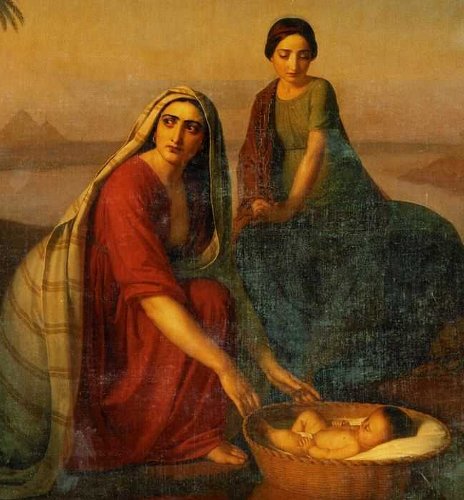 |
In that article the tradition was also reviewed that Amram and Jochebed were born on the very same day, and hence were the same age. They were both very old when their three children Miriam, Aaron and Moses were born.
The day proposed for the births of Jochebed and Amram was Sat 12 Feb 1674 BC, which was 14 or 15 Shebat (PHC), the same as Moses' birthday. It was also 1 Water (SR), which gives new meaning to Moses' name which means "Out of the Water". It was also 1 Prime (V and UV) and 1 Birth (M). The point for this article is that they were both born in the short window of time when the V and UV calendars were in perfect alignment. They were born only 6 years before Levi's death at age 137 which was also in that interval.
Jochebed being born during that alignment period was most likely very important. There had to be some important reason for her to have been so old at Moses' birth. There are legends of how she was miraculously changed to look young again. Something like that must have happened for her to have been chosen to be the wet nurse for her own infant son.
Perhaps Moses' mother and father both being born and Levi dying in that brief period of V-UV alignment allows Moses to be counted as one of the chief angels. All three of them were even born on Moses' birthday! They appear to be three witnesses pleading the case for Moses. That could be strong enough evidence to change the exception for Moses to be "warranted" instead of "unwarranted" because Moses needed to live when he lived, and his parents were willing to beget him in their old age so that he could.
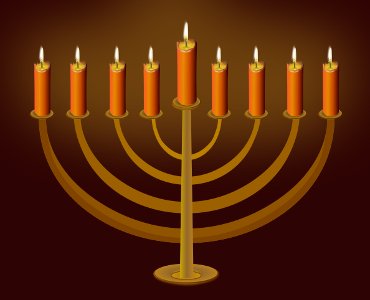 |
That's all well an good, but what about the actual day that is being remembered? The feast celebrates the rededication of the temple in 165 BC. It is also called the "Feast of Dedication". At that time there was only enough oil to burn for light for one day, but miraculously it kept burning for eight. Hence the name, "Festival of Lights".
Until now, there had not been much to say about the date of 25 Kislev 165 BC. It was Mon 21 Nov 165 BC according to both the PHC calendar as well as the traditional Hebrew calendar. That day was also the day 1 Temple (SR), and 1 Creation (M) but that was about all. The 1 Temple symbolism is perfect for a rededication of the temple, but other than that it wasn't too remarkable, so it hasn't been published.
Now there is more to say. Keep in mind that this is not a date which was found by using patterns. This is an exact date known from history, and taken from the Hebrew Calendar. With that in mind the date on the Uniform Venus Calendar is 1 Quicken. That is the date of the Savior's birth on the UV calendar. The first Festival of Lights occurred exactly 102 uniform Venus cycles before the birth of the Christ. The chance of any fixed date from history falling on the same day as Jesus' birth is only 1 in 585, so that alone is significant. Then adding to that the symbolism of it being 1 Temple (SR) and also the beginning of the Mercury cycle makes it a special holy day indeed.
What about events in the latter-days where some dates are known precisely? The Uniform Venus Calendar sheds light on the importance of several dates associated with the coming forth of the Book of Mormon and the founding of the Church of Jesus Christ. Let us consider a few.
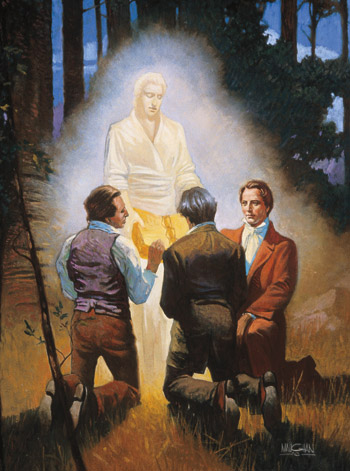 |
Looking at that day Thu 26 Mar 1829 pm*, it turns out it was also 1 Lord (UV). The day 1 Lord is 13 days (one trecena) before the day 1 Creation. This is a good example of how the two calendars get out of sync with each other. At the time of Joseph Smith's birth, the two calendars had identical dates for about twenty years. Now it is some twenty years later and one 13-day trecena has been dropped from the Venus Calendar to keep in step with the actual planet in the sky. We shall see that the 13-day difference allows for twice as many days at the founding of the church to be sacred because several event days are just 12 or 13 days apart.
In this case, it was 12 days later on Tue 7 Apr 1829 that Oliver Cowdery began as scribe in the translation of the Book of Mormon. He would become one of the three witnesses, and he replaced Martin Harris as scribe, to whom the revelation about the three witnesses was given 12 days earlier. That day was 0 Creation (UV), which is no surprise, being 12 days after 1 Lord. But the day was also 13 Temple (SR), the morning on which Jesus resurrected, appropriate for the resurrection of the Book of Mormon. In an earlier paper it was pointed out that it was also the day of Consecration (10 Spr), when one is set apart for a calling, on the Enoch Calendar. Thus it was a holy day on four calendars.
Also in the last paper it was discussed how the final date of the Creation Pattern fell on Thu 25 Mar 1830, the date of the Book of Mormon being ready for sale. That day was New Year's Day (1 Nisan PHC), 1 Eagle (SR), 1 Resurrection (V) and 1 Lord (M). Now consider also the UV calendar which is running 13 days earlier than the Venus. That means the day fell on 1 Death (UV). The symbolism isn't as wonderful, but it is still a holy day. That makes a total of 5 holy days for the resurrection of the Book of Mormon, including both Venus and Mercury being on the same day as the Resurrection of Christ.
But now everything is ready for another great alignment.
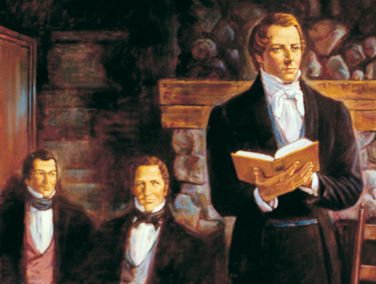 |
Now two more holy day scores can be added. First of all, due to the recent corrections to the Venus (and Mercury) Calendar discussed in the last article, the date on the Mercury Calendar has changed to be 0 Creation, with great symbolism for a beginning day (that being the beginning of the Mercury cycle).
Secondly, looking at the UV date, the day of Tue 6 Apr 1830 is 12 days after Thu 25 Mar 1830, so the day was 0 Resurrection (UV). That is perfect for the Resurrection/Restoration of the Church of Jesus Christ. So part of the significance of the date of the founding of the Church, which was shown to the Prophet Joseph Smith by revelation, is only clear with the discovery of the Uniform Venus Calendar. It definitely adds understanding to the entire picture and validates the calendar as truly important in the big scheme of events.
The fact that the Venus and UV Calendars disagreed by 13 days made it possible to have two sets of holy events fall at the ends of the two 13-day intervals on those calendars. There was a Resurrection day for the Book of Mormon (V) followed immediately by another Resurrection day for the Church (UV). Such amazing organization boggles the mind!
The Uniform Venus Calendar (UV) uses the same pattern as the Venus Calendar (V), but is never adjusted to track the actual planet. There is sufficient evidence to indicate that God is using it for both births and deaths as well as historical sacred events. Six of the seven proposed chief angels either were born or died when the UV and V calendars perfectly aligned or were opposite each other. Moses is the exception but the two calendars align for both of his parents and his grandfather, who might stand in for him. Abraham is a possible candidate because he has an acceptable birth date and name, but lacks most of the correspondences to the seven constellations. It is too early to reject Moses because of not fitting one hypothesis; to me the evidence still favors Moses as being Raguel, but time will tell. Table 3 summarizes the data from that study so far.
| Angel | Man | Align? |
|---|---|---|
| 1. Uriel | Peter | Yes, identical at death |
| 2. Raguel | Moses? Abraham? | No, but Yes for both parents, grandpa Yes, opposite at birth |
| 3. Sariel | Abel | Yes, opposite at death |
| 4. Raphael | Enoch | Yes, opposite at translation |
| 5. Phanuel | Joseph Smith | Yes, identical at birth |
| 6. Gabriel | Noah | Yes, opposite at birth |
| 7. Michael | Adam | Yes, opposite at death |
It was also shown that several noble women were born or died on UV holy days. Noah's wife Naamah was honored as well as Moses' mother Jochebed. The historical date of the first Jewish Feast of Dedication (Hanukkah) was shown to occur on the same UV holy day as the birth of Jesus Christ. Finally it was noted that the resurrection of the Church of Jesus Christ of Latter-day Saints occurred on the day 0 Resurrection on the UV Calendar.